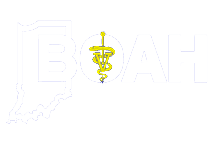Sheep
Scrapie
Scrapie develops slowly, and infected animals usually don't show signs of the disease--including weight loss, tremors, loss of coordination, swaying, or wool-pulling--until they are 18 months of age or older. Infected dams may shed the infectious agent (or prion) during lambing without showing clinical signs of disease.
Exposure: Exposure risk is the highest when affected females give birth because the agent believed to cause scrapie is found in high concentrations in birthing fluids and reproductive tract secretions.
Examples: Affected ewes lambing, lambing all sheep together instead of separately, improper disposal of placenta, failure to disinfect lambing areas properly between groups, failure to change bedding between lambings and disinfect equipment between uses.
Biosecurity Control Points:
Codon testing to eliminate susceptible animals from entering flock.
Separate contemporary lambing groups.
Segregate lambing groups with cleaning and disinfection between use of common lambing areas.
Segregation of each group away from each other for 60 days after lambing.
Use solid partitions between lambing groups to avoid cross-contamination of birthing fluids.
Proper disposal of placentas.
Remove and properly dispose of used bedding between lambing groups.
Use disposable equipment when possible, if item must be reused, it should be cleaned and disinfected with a bleach solution.
Participate in the Scrapie Flock Identification Program.
Foot Rot
Clinical signs include lameness, swollen feet and abnormal hoof growth.
Exposure: May result from infected animals being introduced into a flock or contaminated fomites.
Examples: Infected animals brought to the premises, visitors' boots or shoes, contaminated hoof-trimming equipment
Biosecurity Control Points:
All visitors should be restricted to areas not used by sheep.
Disposable boots and coverall should be provided for visitors.
Establish a one-way tour route for all visitors.
Producers should wear different clothes on and off the farm
Vaccinate (if applicable).
Maintain a closed flock.
Isolate new animals away from the main flock for a minimum of 3 weeks.
Clean and disinfect transport vehicles between uses.
Foot soaks and other therapies according to flock veterinarian.
Ringworm or Club Lamb Fungus
Ringworm or club lamb fungus is a fungal disease that infects the outer layers of skin and wool shaft. All domestic animals, including livestock and pets, as well as humans, are susceptible. Because people can easily catch this disease from pets or exhibition animals, ringworm-infected animals pose a public health problem. Ringworm appears as generalized patchy areas of skin irritation, causing a loss of wool. Oozing or redness may occur at the site. The disease derives its name from the circular pattern it creates, that was once thought to be caused by a skin worm.
Exposure: Contaminated equipment and facilities or direct exposure to animals and people.
Examples: Shared blankets, feeders, combs, halters, clippers, trucks, trailers, gates, various show supplies in the show box, hay, hay bags, feed bags, bedding, towels and gloves (unlaundered).
Biosecurity Control Points:
Do not share or borrow equipment.
Clean and disinfect your own equipment between animals.
Isolate new animals for at least 3 weeks.
Avoid letting other people touch or handle your animals (people can also transmit this fungus to sheep or between sheep).
Avoid buying infected animals.
Keep environment free of exposed nails, sharp panel wire and wooden splinters.
Ovine Progressive Pneumonia, OPP
Usually no clinical signs are seen before two years-of-age. Signs in the respiratory system are produced by the body's cellular response to virus-infected macrophages. Weight loss, bacterial pneumonia, arthritis, non-indurative mastitis ("hard bag syndrome") and lesions may accompany respiratory signs.
Exposure: Direct contact with nasal secretions and aerosols containing the virus and through the consumption of colostrum from infected dams.
Examples: Herd additions, natural service breeding program
Biosecurity Control Points:
Maintain a closed flock.
Test all new animals for OPP.
Isolate new animals away from main flock for at least 3 weeks.
Artificial insemination and embryo transfer.
Clean and disinfect clothing, shoes, boots, feed containers, vehicles, etc between uses.
Caseous Lymphadenitis-pseudotuberculosis
Caseous Lymphadenitis causes lesions (masses of diseased tissue), which look like lumps or abscesses of various sizes. These lesions can occur under the skin or in any of the internal organs. Because the course of the disease is often measured in months to years, during which infected sheep usually seem healthy, the sheep producer may not be aware of the existence of the disease within the flock. If lesions rupture, they can drain onto feeders, wool and the ground, which puts the rest of the flock at risk. Clinical signs include weight loss, unthriftiness, reduced productivity and mortality.
Exposure: Exposure can occur through unbroken skin, mucous membranes and inhalation of contaminated aerosols and through a common factor that intensifies the disease in a flock.
Examples: Shearing wounds, shearing blades and gloves worn by shearers, manure, soil, protruding nails, wires, sharp-edged metal pans and rough boards
Biosecurity Control Points:
Maintain a close flock, if possible.
Test and isolate all new animals away from main flock.
Reduce the risk of injury to minimize skin exposure.
Clean water frequently.
Paint with non-toxic paints and/or whitewash where disinfection of surfaces is impractical or not possible.
Flaming disinfection with torches and steam cleaning may be used on certain objects that are too expensive to replace.
Limit visitor traffic.
Provide boots and coveralls as needed.
Wear different clothing and footwear on and off the farm.
Avoid sharing equipment.
Clean and disinfect all vehicles, equipment, tractors and feed containers between uses.
